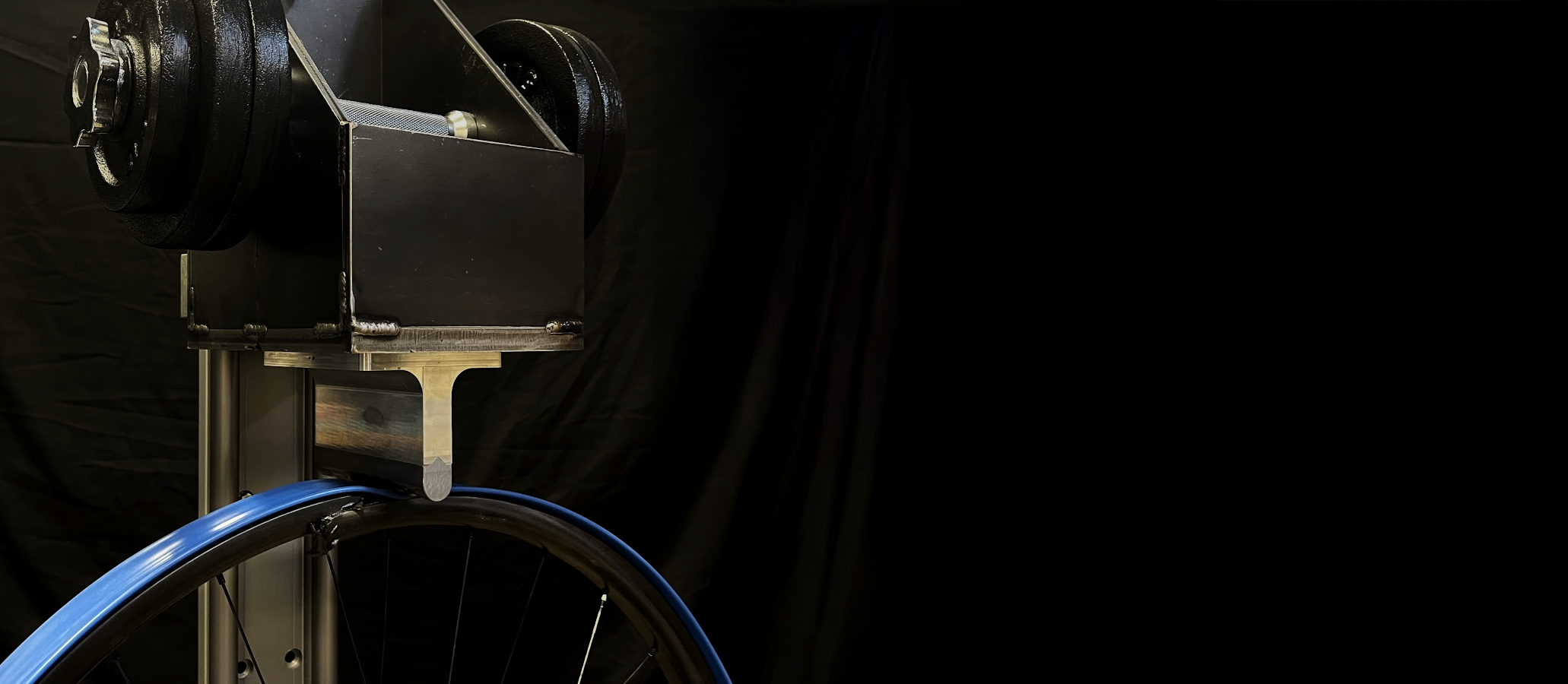We Had to Learn Why Rims Break (and what to do about it)
Rims break when a wheel can’t move out of the way of a rock fast enough. Most of the time, it’s a suspension issue. If the shock can’t respond quickly enough, the rim ends up taking the hit before anything else can absorb the impact.
If you’re a wheel breaker, or just worried about your nice wheelset, try opening up your high-speed compression on your shock. Compression damping helps keep your tire planted on the ground to hold grip, but it can also stop the tire from moving out of the way when you hit something sharp. The rock punches through the tire’s travel and into the rim.
But, even with good suspension setup and smart lines, mistakes happen. You miss a line or land harder than expected, and the rear suspension bottoms out into a sharp rock. At that point, there’s no more suspension to save your rim. That’s where inserts come in. Not as a substitute for smart setup or proper gear, but as a safety net when things go wrong.
Why your rims may be breaking and what to do about it:
1. Too much damping. An overdamped shock, especially with high-speed compression set too firm, can keep the suspension from reacting fast enough. The rim hits the rock before the suspension has a chance to move. Open up that High Speed Compression adjustment and give your rear wheel some room to breath.
2. Oversprung setup. If your suspension is too firm and you’re not using full travel, you’re hitting rough terrain with less cushion and less energy absorption than the bike was designed to provide. That puts more force straight into the rim, making it take harder hits than it should. Want your wheels to last longer? Make sure your suspension is soft enough to let the wheel move out of the way of bumps more easily.
3. Riding style. If you ride like you don’t care about your wheels, you’ll probably break them. Line choice and intent matter. Just riding with a little more purpose can make your wheels last a whole lot longer. For some reason if your driving your car and see a pothole, you try to avoid it, right? Because you know if you hit it, you might break something. But riding bikes, we often smash straight into those same kinds of impacts and expect our gear to take it. Unfortunately, physics doesn’t work like that. I really wish it did.
What about racing? Yeah, sometimes you have to charge through rough terrain to stay fast. But the slowest race run is the one you don’t finish because you broke a wheel. There are top riders who are known for breaking stuff—and others who are known for never breaking anything. Both can win. What’s the difference? Intent. Wheel placement. Line choice. You can still win and not break wheels. And if you want to win, you'll want to figure out how to ride in a way that keeps your wheels alive. That's what the top riders do.
4. Weak wheels. Sometimes you’re just riding harder than your wheels were built for. If you’re regularly breaking rims, you might need burlier wheels to match your style or weight before you consider inserts. Imagine riding a cross country bike on a downhill track. Are you surprised if it breaks? It's not fun that it does, but your riding outside of the intended use of the bike. The same goes for wheels. If you break a rim, get a stronger one as your replacement.
Even with all that, mistakes happen. And that’s the main argument for having an insert. Even if you do all of this stuff, sometimes you run out of talent—miss a line and bottom out on a sharp rock. The wheel can’t move much after a bottom out… and the loads are high enough to where you can’t just ride “lighter.” Sometimes you just need some extra protection and that’s where an insert can make sense.
Wheels usually fail in one of two ways:
A) First, they bend or warp (aluminum) or buckle (carbon). This often means your wheels aren’t strong enough for your weight and terrain. The wheel just isn’t built for what you’re doing, and inserts won’t help much in this case. If you’re warping or buckling rims somewhat often, you probably need a stronger wheel before messing with tire inserts.
B) The second kind of failure is the one inserts are made for: dings in aluminum or cracks on just one of your rim flanges, in carbon. Rim Saver and most other inserts are designed to help with this kind of failure. They spread out that initial impact and take the edge off sharp hits.


Tire Sidewall is Where a Lot of Your Traction Lives